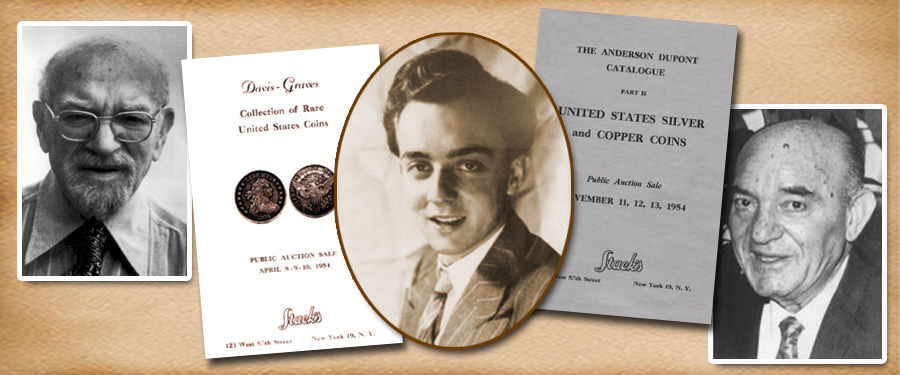
What, you may ask, made the year 1976 so important at Stack’s? First of all, I (Harvey Stack) was appointed by President Gerald Ford to serve as a governor at the Annual Assay Commission in Philadelphia. This was a great honor as it was our country’s bicentennial year, and also turned out to be the last year this commission was to be convened.
Second, we were involved with bringing the Louis E. Eliasberg, Sr. Collection to the new U.S. Mint building in Philadelphia to be the highlight exhibit during the Bicentennial. Third, Stack’s was awarded the 1976 ANA Annual Convention Auction to be held in New York. While Philadelphia might seem to have been a more appropriate location for the convention, because of the Bicentennial and the millions of visitors flocking to that city, space in a convention center and local hotels was not available. Instead, New York City was chosen, with the convention and the auction to be held at the new Sheraton Hotel on Broadway. In addition, Stack’s also had scheduled six other public auctions for the year. All of this was in addition to our ongoing retail business in our New York City shop as well as traveling to conventions and to pick up consignments and make appraisals.
After receiving my appointment to the U.S. Assay Commission, I was told a time in early February to be at the brand new U.S. Mint building in Philadelphia, which was not yet complete at that time. We governors arrived and were welcomed by the secretary of the Treasury, the director of the Mint, the head coiner and engraver, as well as the entire staff. We were taken to a special room, where there was the equipment needed to do our assigned jobs. Though the use of precious metal had been terminated for the dimes and quarters in 1964, silver remained part of U.S. coinage until 1967. However, by 1976, actual "assaying" of coins was not required of those of us on the commission. Instead our job entailed opening bags of coins to first count that they were correctly bagged, check if they were well struck, verify the milling on the edges, weigh samples to see that they conformed, measure the diameter to be certain they were "standard," and review the minting records made at each of the three mints. Though it seems to be a relatively simple operation, many reports had to be compiled which took a number of hours, and each report had to be signed and attested to by the governors. We were each given a bound copy of the reports, together with the additional documents we signed during our visit.
During our visit, we were taken down onto the Mint floor, where we watched how the metal was rolled into strips and how the strips were then bathed to give back their bright color. We saw how the planchet cutting machines prepared the blanks for striking, and we stood next to the coiners who were watching the planchets being fed into the presses as the coins were struck. We watched how the new coins were transported from the presses to the counting machines and then bagged. Samples were examined and counted again to ensure they were correct. Actually being on the coining floor and watching close up as each Mint employee completed an assigned job was very exciting.
That evening we had a special dinner in the Mint building, and were each presented with a document signed by President Ford that attested to the work we did, a special oval silver medal commemorating our commission, and even a small lapel piece which we were given to wear. It was a very memorable experience that I will cherish always.
In my next segment, I will tell the story of how the Eliasberg Collection almost "missed" the Bicentennial celebration at the Mint.





